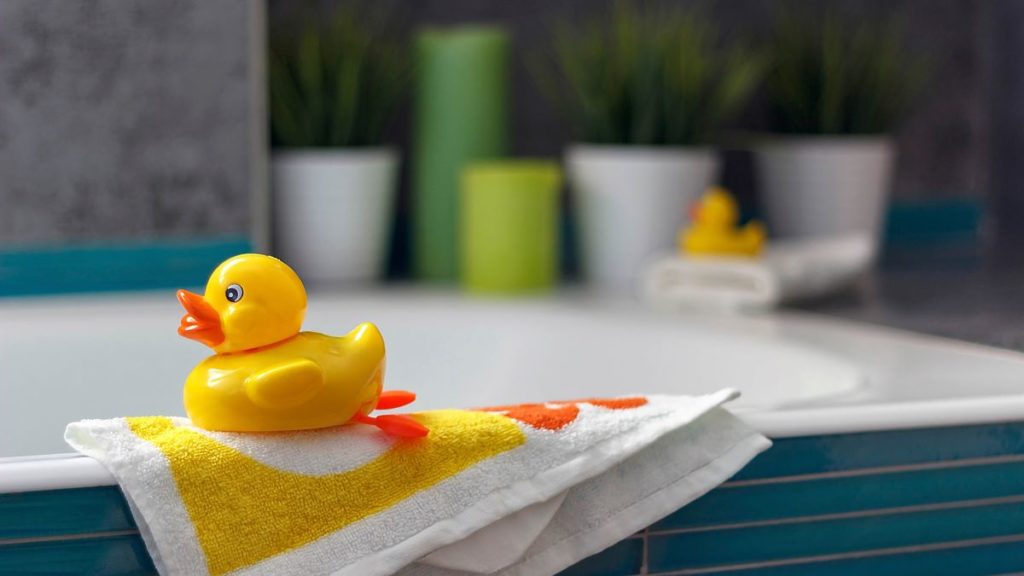
Tricks to Save Energy (and Water) in the Bathroom

Did you know you can cut your environmental impact with a few simple changes in your bathroom buying and habits?
The bathroom may not be the room you’d think of when you consider high energy consumption in your home. Instead, you might consider the electricity-hungry refrigerator in the kitchen, the clothes dryer in the laundry room, or the plethora of electronics in the living room and family room to be the biggest culprits. But it’s worthwhile to take a second look at your bathroom and how you can make a few tweaks to use less energy there as well.
Here are a few tricks that can help you save energy (and water) in the bathroom.
This article contains affiliate links. If you purchase an item through one of these links, we receive a small commission that helps fund our Recycling Directory.
Hot Water
The largest energy users in your bathroom are the largest water users: the shower and the tub.
Water heating accounts for about 17% of an average family’s energy usage or about 4,000 watts a year. You can reduce this energy usage by lowering the temperature of your hot water heater. While your heater might be preset at 140 degrees Fahrenheit, this presents a risk of scalding hot water in addition to wasting energy. Most households need it no hotter than 120 degrees and 115 is often just as comfortable. Experiment for a few days to see your tolerance levels.
Additionally, you can reduce water usage by installing a low-flow showerhead that aerates the water so it uses less of it. Of course, taking shorter showers (and lower baths) will also use less water. To encourage shorter showers, use a waterproof timer to create competition between the kids — and adults! Your sinks don’t use nearly as much water as the shower and tub but low-flow faucets and aerators help reduce water usage there as well.
Electronics and Appliances
You may not plug in your cell phone, computer, or TV in the bathroom, but there are still a lot of small electronics and appliances many of us use there. And there’s one really easy way to save electricity with these items. Don’t leave your electric toothbrush, Waterpik, lotion warmer, towel warmer, fan, night light, or air freshener plugged in all the time. Depending on the model, if left plugged in, many of these small appliances are drawing so-called “vampire loads,” consuming electricity constantly even when not in use.
For the items that use an electrically charged battery, plug them in only when they need to be charged. Often, electric toothbrushes can go weeks without needing to charge. Use a motion sensor nightlight or at least a nightlight that will only be on when it’s nighttime. While they vary by model, incandescent night lights can use up to 7.5 watts while LED models often draw only 0.5 watts.
Only use fans and warmers when needed. Consider swapping your electric air freshener for a natural air freshener that does not use energy. (Learn how to make your own freshener spray using essential oils, vodka, and distilled water.)
Also, don’t leave your curling iron or straightener on for longer than needed, and don’t overdry your hair. Curling irons use up to 0.15 kWh per hour while hair dryers use a lot more energy at 1.5 kWh per hour.
Lighting
We always encourage you to replace CFL or incandescent bulbs with energy-efficient LEDs. These energy-saving light bulbs produce light up to 90% more efficiently than incandescent light bulbs and last much longer. Your bathroom is probably not a room where the light is on all the time but it does still need to be illuminated, so switch out those bulbs and save energy. Remember your showy vanity LED bulbs, too.
By being diligent, we can reduce energy usage in every room of our homes.
Originally published on November 30, 2020, this article was updated in October 2022.
<!–
You Might Also Like…
–>